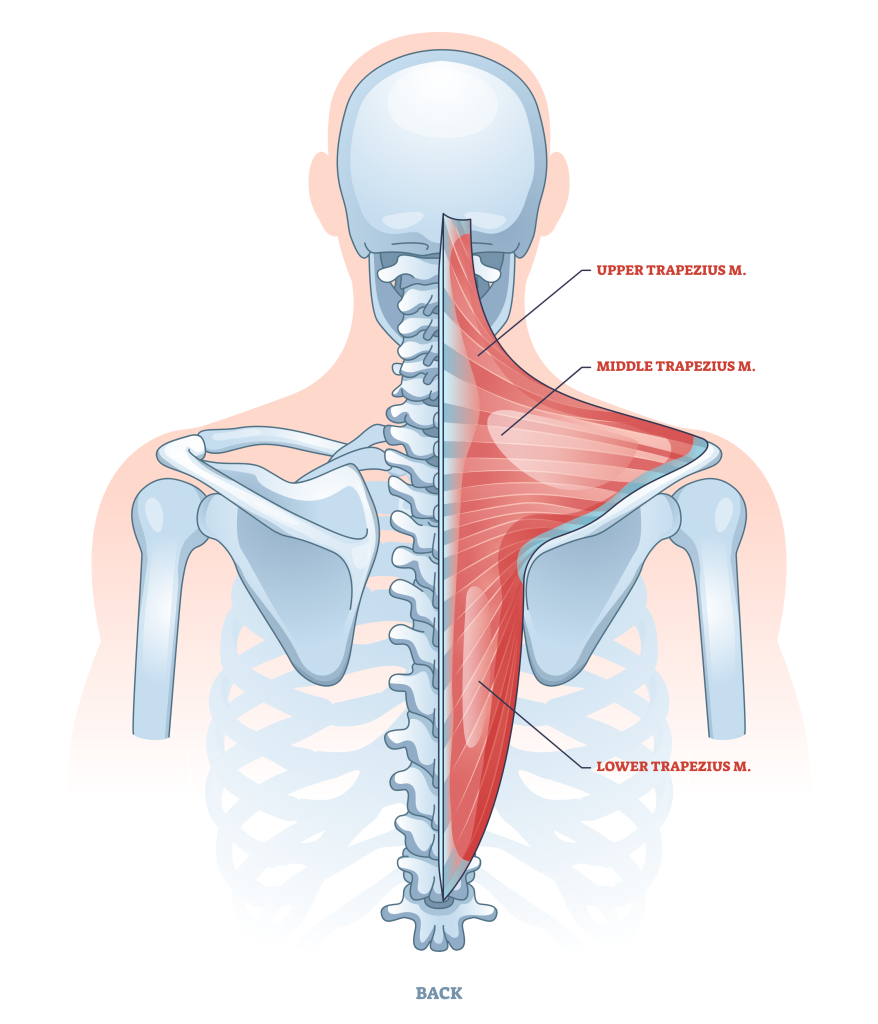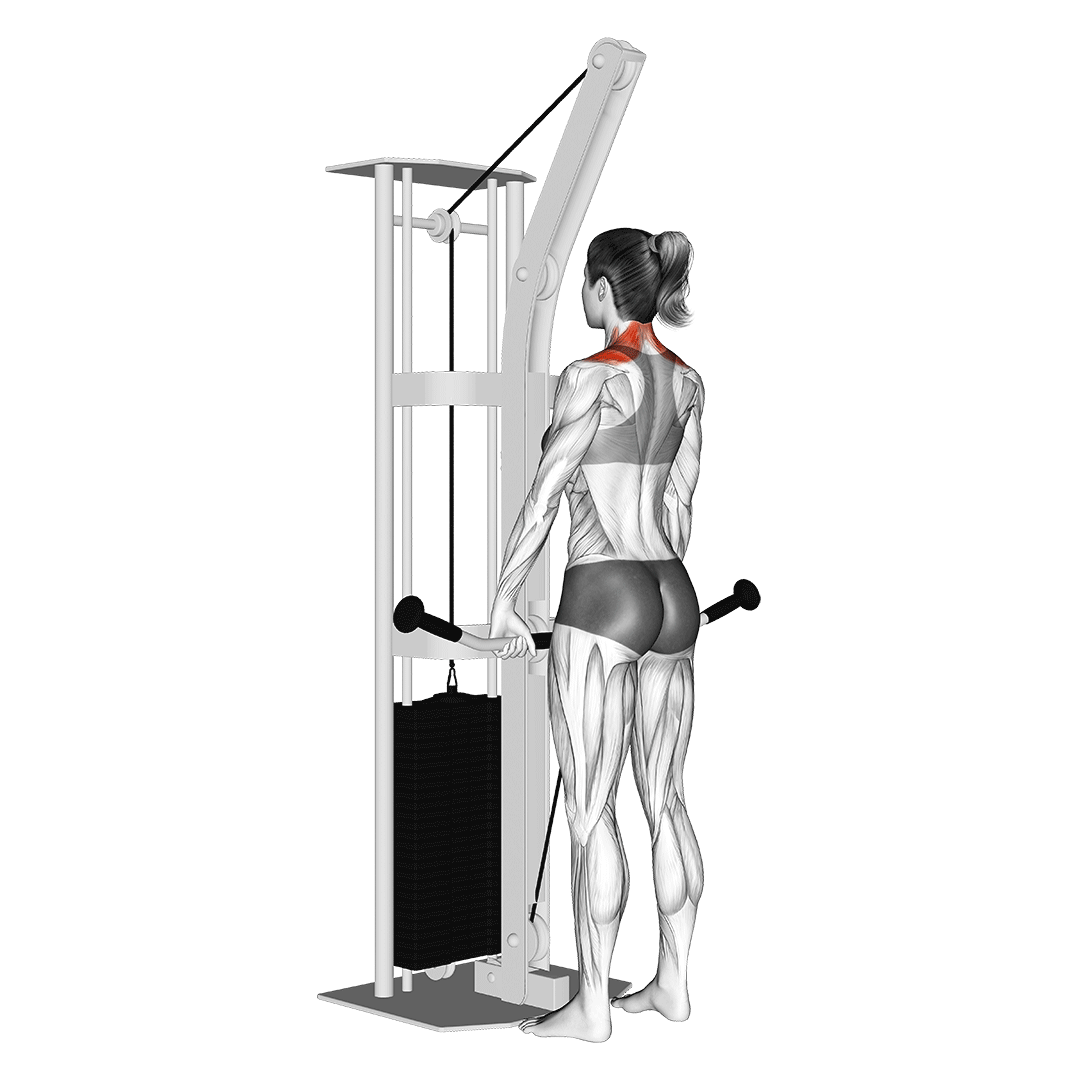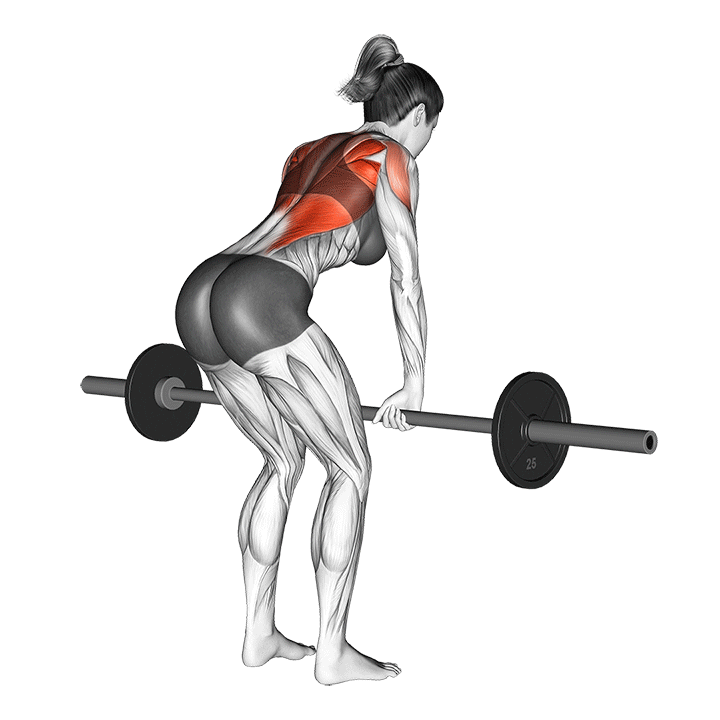What are the Benefits of Doing Cable Shrugs?
Cable shrugs offer a number of benefits both unique to the cable variant itself and a few applicable to all shrug variations as a whole.
Namely:
- Great for Building Trapezius Mass and Strength
- Reinforces Scapula and Shoulder Biomechanics as a Whole
- Develops Vertical and Horizontal Pulling Strength
- Consistent Level of Tension
- Adjustable, Simple and Easily Modified
- Improves Posture and Upper Trunk Stability
Benefits of Cable Shrugs
Great for Building Trapezius Mass and Strength
The main purpose to performing cable shrugs is building mass and strength in the trapezius muscles - something that it does quite effectively, considering its isolation of the muscle and capacity for significant volume.

Because the majority of exercises that involve the trapezius tend to overshadow it with larger muscles like the lats, the traps can often be underdeveloped as a result.
Whether you’re a bodybuilder seeking the appearance of greater muscularity or a strength athlete wishing to maximize scapular stability, the targeted trapezius development of cable shrugs is a perfect inclusion.
To get the most out of the exercise, ensure that a full range of motion is achieved and that the trapezius is sufficiently challenged through both load and set volume.
Reinforces Scapula and Shoulder Biomechanics as a Whole
Because the trapezius plays such a wide-reaching role as far as scapular movement (and, by extension, certain aspects of shoulder movement) - it should stand as no surprise that cable shrugs reinforce these biomechanical actions as well.

In particular are scapular elevation and depression, both of which are practiced through a nearly complete range throughout each repetition of cable shrug.
Over the course of multiple training sessions, cable shrugs will develop smoother, stronger and more stable scapular mechanics. Of course, this is in addition to the exercise’s capacity to strengthen the underlying muscular and connective tissues responsible for said mechanical actions.
Develops Vertical and Horizontal Pulling Strength
The trapezius is rather unique among the back muscles for functioning along both a vertical and horizontal plane.

Although the cable shrug itself is classified as a vertical pull, the fact that it strengthens the trapezius means that horizontal pulling movements - such as the barbell row - will also be indirectly strengthened as well.
Because of the trapezius’ multi-planar functionality, the cable shrug and other shrug variants like it are frequently used for improving performance in the majority of compound pulling movements, especially if issues like an unstable scapula or poor shoulder positioning are present.
Consistent Level of Tension
As is the case with practically all machine-based exercises, the cable shrug provides a consistent level of tension, regardless of the lifter’s position or what specific portion of the ROM is being completed.
Conventional free weight shrugs present a major disadvantage in that tension is lost in the trapezius when reaching the bottom of the repetition - something that does not occur as the cable is constantly drawing the hands towards the pulley itself.
With a consistent level of tension throughout the repetition, the trapezius is worked to a far more effective degree, ensuring that no imbalances and greater muscular hypertrophy are achieved.
Adjustable, Simple and Easily Modified
Yet another benefit of being a machine-based movement; the cable shrug can be easily adjusted or otherwise modified to help meet the individual needs of each lifter.
Apart from allowing for a unilateral or bilateral movement pattern, the cable machine also enables liters to freely change the actual angle of resistance used or to otherwise change the specific orientation of their grip.
By moving the pulleys to a different height or simply swapping out what cable handles are used, the exercise can be made to better target the middle trapezius, involve an underhanded grip or even allow for only one side of the trapezius to be trained at a time.
Improves Posture and Upper Trunk Stability
Because the trapezius is (in part) responsible for proper positioning of the upper back and shoulder blades, regularly training it through a full range of motion will improve the posture of lifters who otherwise suffer from poor upper body posture as a result of muscular weakness.
Even in cases where no postural issues are present, cable shrugs should be included into a proper back workout for their stabilizing and injury-reducing benefits.
Stronger and more flexible trapezius muscles equates to a lower risk of injury to the entire upper trunk, and greater isometric strength in activities where they do not exhibit isometric contraction.
References
1. Javorek, Istvan. EXERCISE TECHNIQUES: Shrugs. National Strength and Conditioning Association Journal 9(6):p 28-33, December 1987.
2. Johnson, G et al. “Anatomy and actions of the trapezius muscle.” Clinical biomechanics (Bristol, Avon) vol. 9,1 (1994): 44-50. doi:10.1016/0268-0033(94)90057-4
